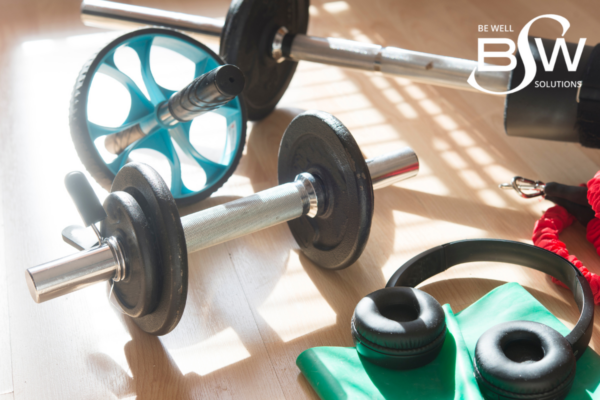Regular exercise can positively influence almost every body system, from managing weight to lowering disease risk. However, navigating the plethora of information about physical activity and exercise can be challenging. We’re returning to the basics to understand the main components of exercise, the current recommendations, and the steps to get started.
Aerobic Exercise
Aerobic exercise is “any activity that uses large muscle groups, can be maintained continuously and is rhythmic in nature” (World Journal of Cardiology1). These activities require oxygen to produce energy, hence the name aerobic. You might also know them as cardio exercises. Aerobic exercise improves heart health, circulation, endurance, and respiratory health. It can help manage blood sugar, blood pressure, and mental health. Activity examples include running, walking, hiking, cycling, and swimming.
Strength Exercise
Anaerobic exercise is “intense physical activity of very short duration, fueled by the energy sources within the contracting muscles and independent of the use of inhaled oxygen as an energy source” (World Journal of Cardiology1). You might know this as strength exercise or resistance training. This activity is necessary for building power, strength, and muscular endurance. It helps create a sturdy support system for our bones and joints. Contrary to popular belief, these exercises aren’t only for bodybuilding. They’re equally important for maintaining the ability to accomplish daily activities and managing a healthy weight. Dumbbells, kettlebells, resistance bands, and barbells are commonly used for strength exercises. However, you can even perform bodyweight exercises that do not require additional equipment.
How Much is Recommended?
How much exercise is necessary for positive results? The U.S. Department of Health and Human Services2 has provided evidence-based guidelines to help Americans understand what and how much exercise gives the most benefit. Adults are encouraged to accumulate at least 150 to 300 minutes of aerobic or cardio exercise each week, plus at least two days of anaerobic or strength training exercises for all major muscle groups. Limiting sedentary time and incorporating balance and flexibility activities are encouraged as well. Overall, any activity will always be more advantageous than none.
Getting Started
The recommendations above are great goals to aim for. However, keep a few tips in mind if you are a beginner. First, talk with your doctor before starting an exercise program or if it has been a while since you’ve exercised regularly. Discuss current conditions or injuries and decide on a game plan to accommodate or manage them. Second, set realistic goals. We might get excited to dive into a new workout routine but be practical with your approach. If you want to exercise five days each week, begin with two or three. If you’d like to run a race, start with walking or jogging short distances. Train the habit and then add to it. Start slowly and then gradually increase. It’s easier to build upon your routine than to dial it back after doing too much too quickly. Next, include a warm-up and a cool-down in each exercise session. Your warm-up should be about 10 minutes long and gradually increase in intensity. Start with general warm-up movements like brisk walking or low-intensity cardio to slowly increase heart rate and body temperature. Then, add in some dynamic stretches like lunges or arm circles to warm up the muscles you’re getting ready to use. After your exercise session, cool down for about 10 minutes by lowering the intensity of your exercise. Allow your heart rate, blood pressure, and breathing to return to a resting state. Follow up with static stretches to relax the muscles you just worked. Finally, listen to your body. Some days will feel easy, and some days will feel hard. Listen to the cues your body is giving and adapt your exercise or take a rest day whenever you need to. Paying attention to your body will lower your risk of injury and keep your exercise more consistent in the long run.
Always consult with your physician before starting a new exercise program.
Continue Reading August 2024 Newsletter: Strategies for Tech-Healthy Life

